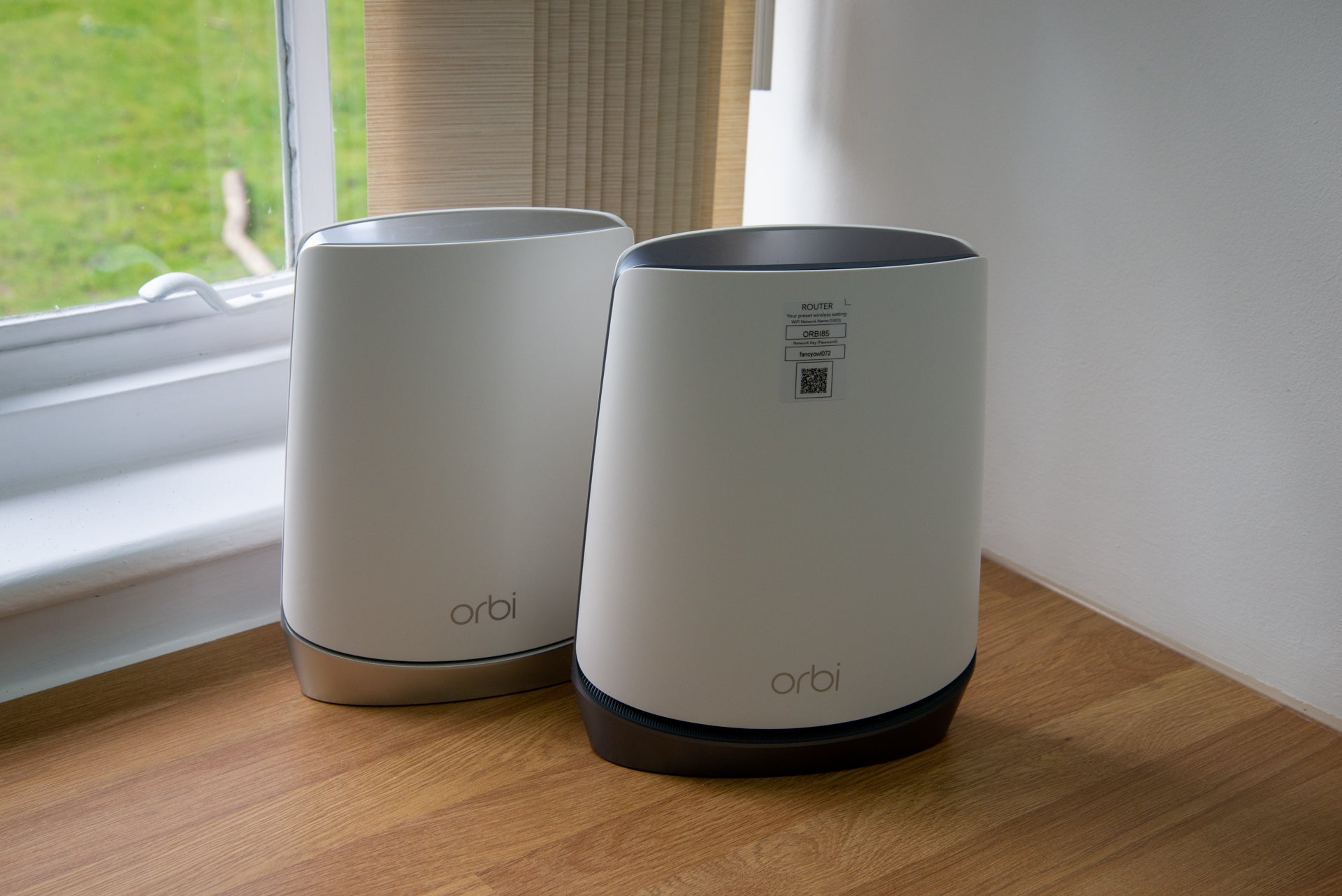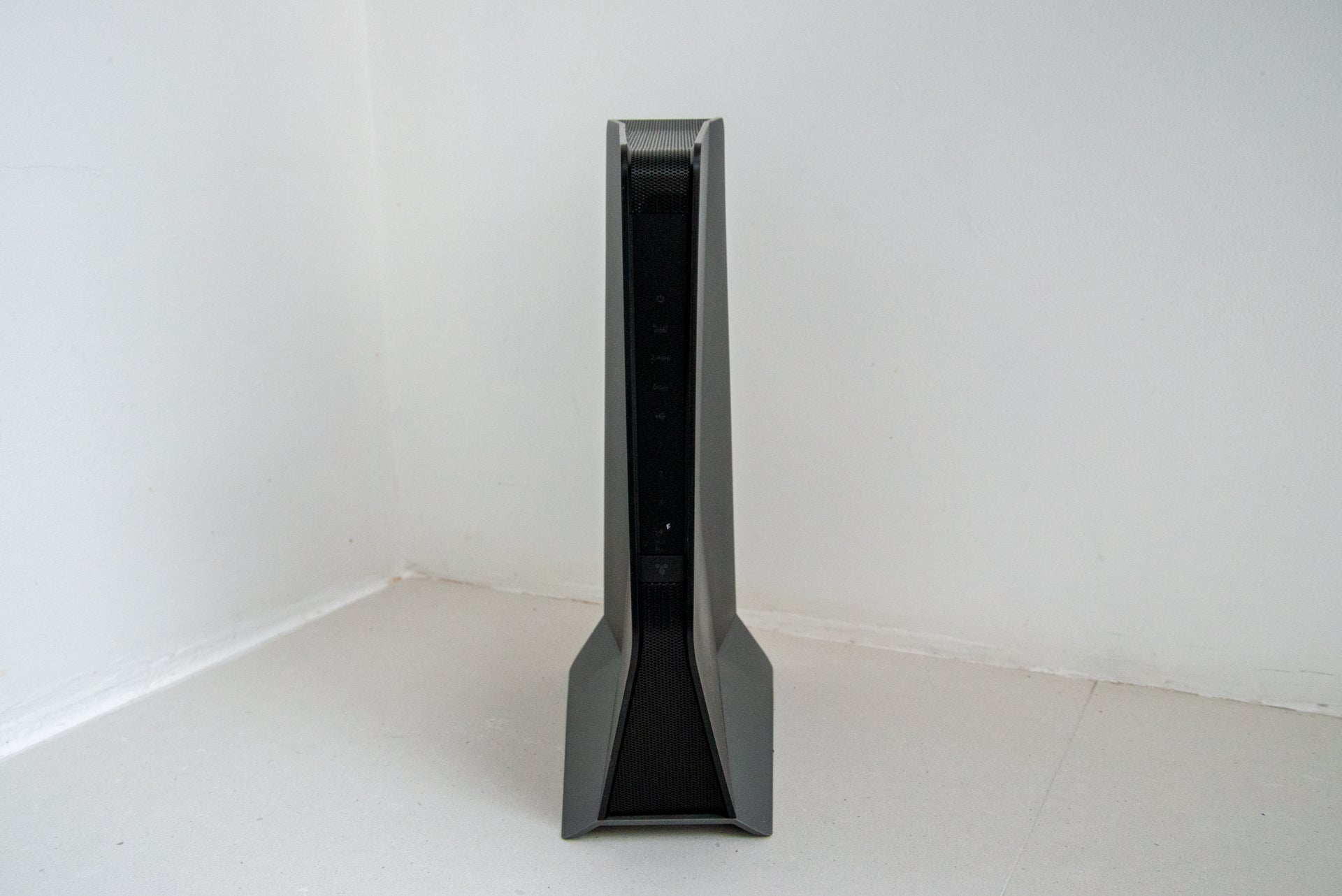Huawei WiFi Mesh 7 Review
Fast tri-band mesh networking
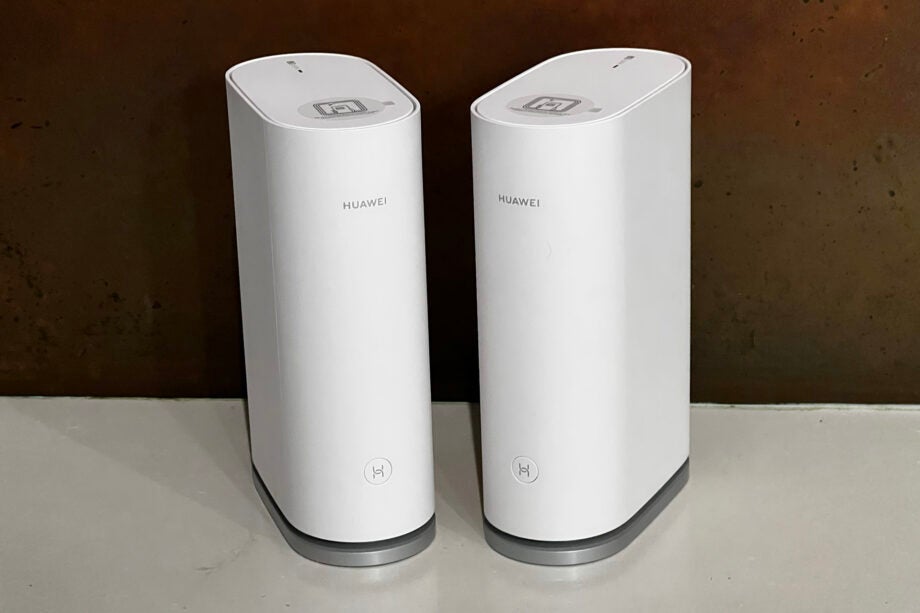

Verdict
Combining a relatively low price with decent speeds, the Huawei WiFi Mesh 7 is a solid and reliable mesh network. It’s a little light on features, such as parental controls and security, which may mean that there are better choices out there for a lot of people.
Pros
- Tri-band
- Clever NFC tech
- Fast
Cons
- A little light on features
Key Features
- Wi-FiThis mesh system uses tri-band Wi-Fi 6: 2×2 2.4GHz network (574Mbps), 2×2 5GHz network (1,201Mbps) and a 4×4 5GHz network (4,804Mbps)
Introduction
Although the price suggests that this is a mid-range mesh system, the Huawei WiFi Mesh 7 is quite surprising because it has a tri-band design, with dual 5GHz networks and a standard 2.4GHz network.
The app’s a little clunky, and its features are basic, but there’s no knocking this system’s performance and ability.
Design and Features
- Slightly confusing app
- Good array of Ethernet ports
- NFC Connect
The Huawei WiFi Mesh 7 ships in a box with two satellites. Both look a bit more like network storage devices than a mesh network, but the curved white plastic boxes are inoffensive and appear quite neat when set up.
The two devices are identical, with four Gigabit Ethernet ports each. On the first device, one of these ports has to be connected to your router, but it can be any, as there’s no dedicated WAN port. It’s worthwhile having this many Ethernet ports, as it means most users won’t need to buy an additional switch.
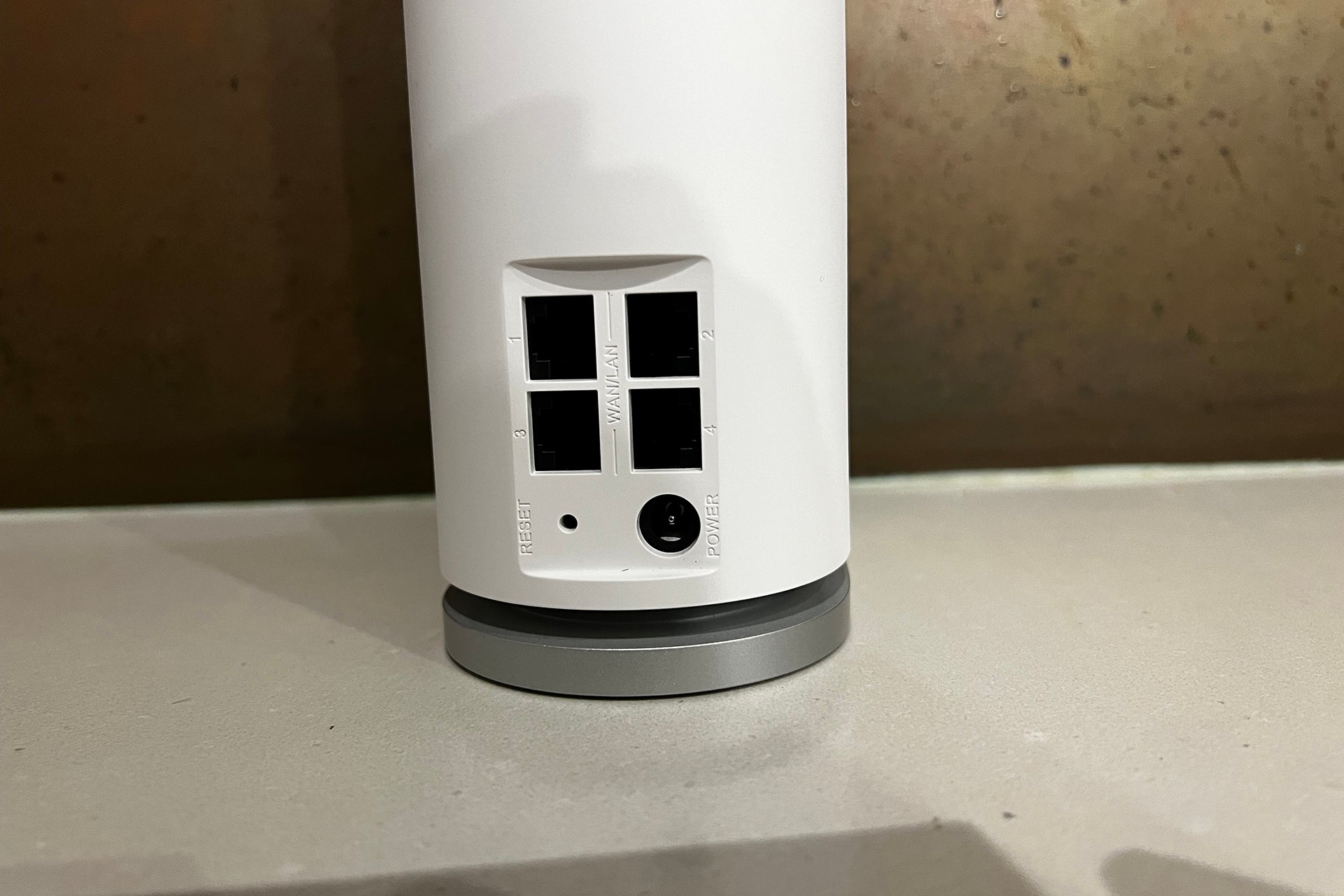
Configuration is through the Huawei AI Life app, which isn’t just for this router but for all of the brand’s smart home products. That makes set-up a bit cluttered, and the app is more basic than you’d find with the competition. It’s also a little glitchy. Several times, the app would kick me back to the main screen and wouldn’t let me select the mesh system again until I’d quit and reloaded it.
Once set up, the features are a bit more basic. Take parental controls, for example. These just let me schedule when a device can access the internet. Each device has to be controlled manually, rather than allowing me to create profiles for each house member and associate all of their devices with them.
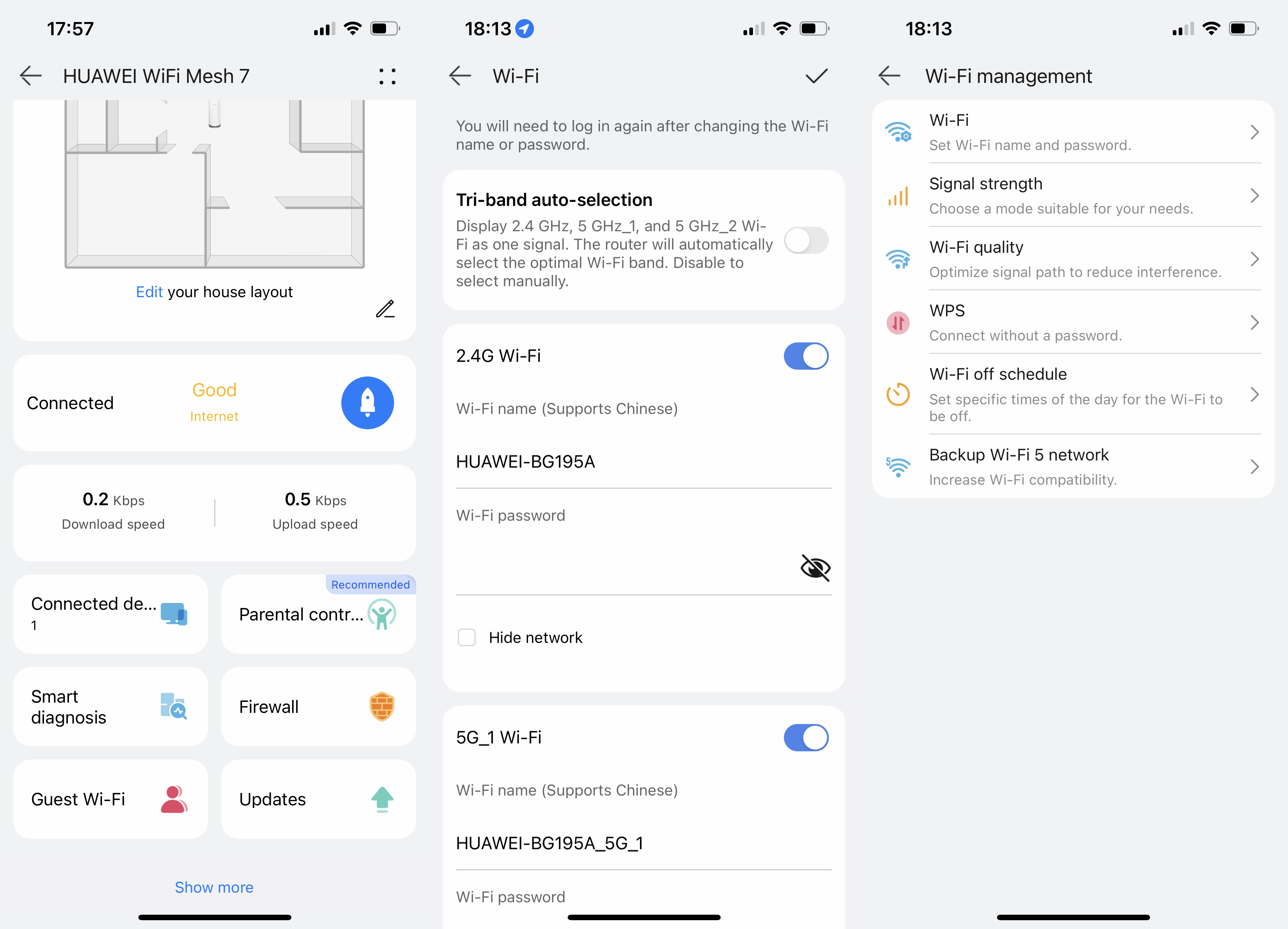
That’s it: there are no security controls or web filtering – not even as paid add-ons – as you get with the Eero 6 Plus or Netgear Orbi RBK852.
By default, the Huawei WiFi Mesh 7 puts all of its three networks under one name, pushing connecting devices to the best network based on range and capability. Unusually, the three networks can be split and displayed under unique network names. Most likely, you won’t need to have to do this, but it’s a neat feature for those who want to control how their devices connect.
You get both WPS for connection and an NFC tag on the top of each satellite. For compatible Android devices, you can just tap the phone to the NFC tag, and it will join the network automatically, which is quite a neat trick.
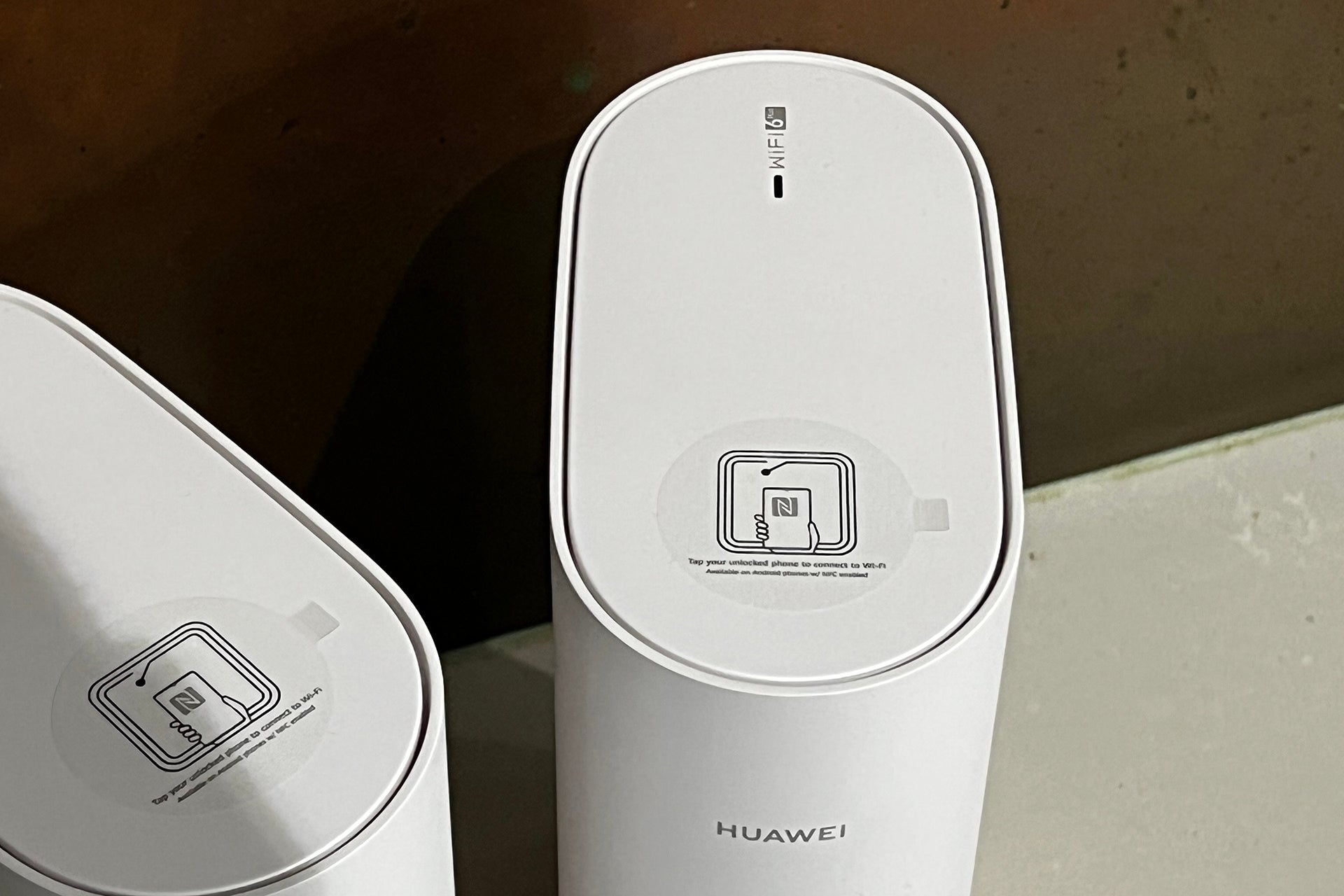
The guest network can be toggled in the app, but if you want to add port forwarding or other advanced features, you must use the web interface.
Performance
- Tri-band networking
- Fast in all tests
There are three networks in the Wi-Fi 6 mesh network. There’s a 2×2 2.4GHz network (574Mbps), 2×2 5GHz network (1,201Mbps) and a 4×4 5GHz network (4,804Mbps), which runs on the higher channels and supports160MHz channels. However, the 160MHz channels only work if there’s no interference and, in my house, I was limited to 80MHz.
All networks are shared between clients and communication between satellites. You can also use an Ethernet cable to connect satellites, which is very useful if you want to create a rock-solid connection or you want to go for a longer range, such as for something like a building in your garden.
I tested the Huawei WiFi Mesh 7 in my usual way, with the router downstairs in the living room and the satellite on the first floor.
Starting close to the main router, I got decent throughputs of 671.93Mbps. On the first floor, throughputs dropped slightly to a still fast 399.495Mbps. On the second floor, throughputs of 351.11Mbps were excellent to see. Clearly, the tri-band design and the fact that my laptop could connect to the faster second 5GHz network helped.
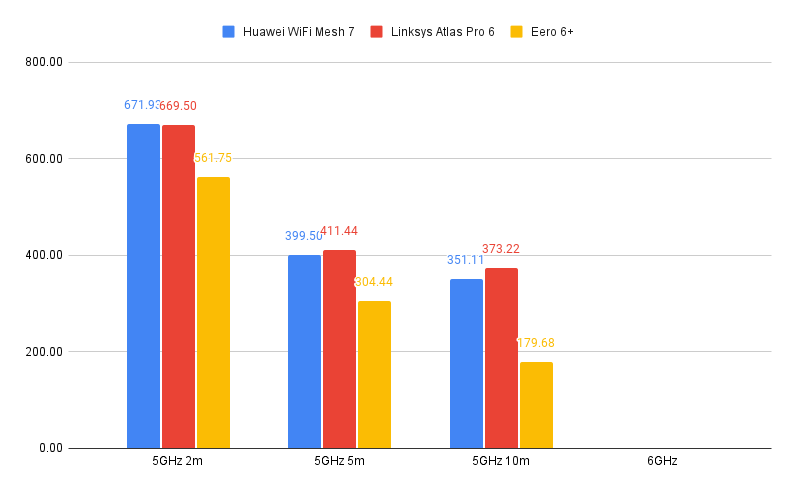
Save money with Trusted Reviews vouchers
Fancy getting a major discount on some of the biggest Huawei products currently available? Then you’ll be pleased to know that our team has secured numerous vouchers and promo codes from Huawei, all in the name of saving you money.
Latest Deals
Should you buy it?
If you want stability and good speeds at a low price, then this quality mesh system may well suit you.
If you want faster performance or a wider range of features, there are alternative mesh systems available.
Final Thoughts
Considering the balance of features for the price, the Huawei WiFi Mesh 7 is something of a bargain. For simple, fast Wi-Fi everywhere, this is a good choice. But if you’re just after a mesh system for basic web browsing and internet use, the Eero 6 Plus is a good alternative, particularly as it has better (paid-for) parental controls and security features.
If you want a faster mesh network but don’t want to pay a lot more, then the Linksys Atlas Pro 6, a dual-band system, is an excellent choice, having done brilliantly in my tests.
How We Test
Unlike other sites, we test every wireless router we review thoroughly over an extended period of time. We use industry standard tests to compare features properly. We’ll always tell you what we find. We never, ever, accept money to review a product.
Find out more about how we test in our ethics policy.
We used it as our main wireless router for the review period.
We throughput test all wireless devices using the same equipment in the same locations for accurate comparisons.
FAQs
This feature lets you tap a compatible Android device on the router to automatically join the network.
They’re all shared between clients and for communication between the router and satellites.

